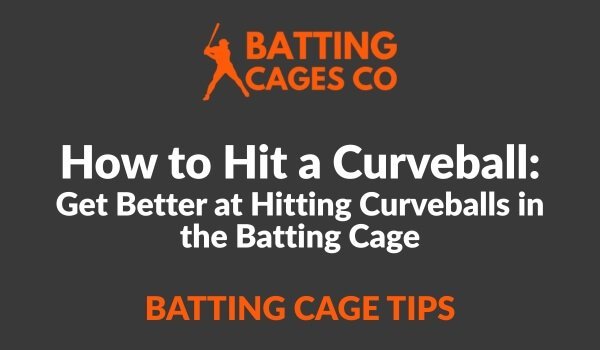Anyone who’s played baseball knows the feeling: you're ready for a fastball, and then — boom — the pitcher drops a nasty curveball that makes you look silly.
It’s part of the game. And if you really want to become a great hitter, you can't just sit on fastballs. You need to train against curveballs too.
Luckily, batting cages are a great place to work on it.
Why Curveballs Matter
Most players spend tons of time blasting fastballs in the cage. That’s fine... but what happens when a pitcher throws something off-speed?
If you’ve never trained your eyes to spot spin or adjust your swing, you’re going to struggle.
Curveballs aren’t just slower — they drop, they break, and they mess with your timing. Practicing against them helps you get better at:
- Recognizing pitches early
- Staying back longer
- Hitting breaking balls with confidence
How to Set Up a Curveball Session
If the cage you’re at has a pitching machine that can throw curves, use it.
Here’s what you want to do:
- Drop the speed: Curveballs are slower than heaters. Knock it down by 10–20 mph.
- Adjust the angle: Some machines can tilt to create that top-spin you need.
- Watch for spin: Good hitters pick up the ball’s rotation early. Try to find the little “dot” that shows the ball is spinning toward you.
Not every cage is perfect, but even a slight break on the ball is better than only seeing straight-line pitches.
How to Approach Hitting a Curve
Here’s the biggest thing: don't rush.
When you’re facing a curveball, you need to:
- Stay patient: Let the ball get deep before you swing.
- Shorten your stride: Keep yourself balanced. No big lunges.
- Hit it where it's pitched: A curveball away? Drive it to right field (if you're a righty). Trying to pull a curve usually ends in a weak grounder or a miss.
Common Mistakes to Avoid
Even when you set the machine up right, players mess up curveball training all the time.
Watch out for these:
- Swinging too early
- Guessing when the curve is coming
- Over-swinging and pulling off the ball
If you feel yourself getting jumpy or frustrated, slow everything down. Reset. Start focusing on seeing the ball early.
Quick Tips to Make It Count
- Mix in fastballs too. Curveballs only matter when you have to adjust.
- Keep score: how many solid line drives did you hit, not just contact?
- End your session with a good swing, not a bad one.
Final Thought
Curveballs aren't going away.
Every pitcher who’s any good is going to throw them. You can either hope you guess right... or you can train for it.
Next time you're at the cage, set that machine to curveballs for a few rounds. It won’t be easy at first — but after a few sessions, you'll start seeing the break earlier, staying back longer, and driving the ball where it’s supposed to go.
Train the hard stuff. That’s how hitters separate themselves.

